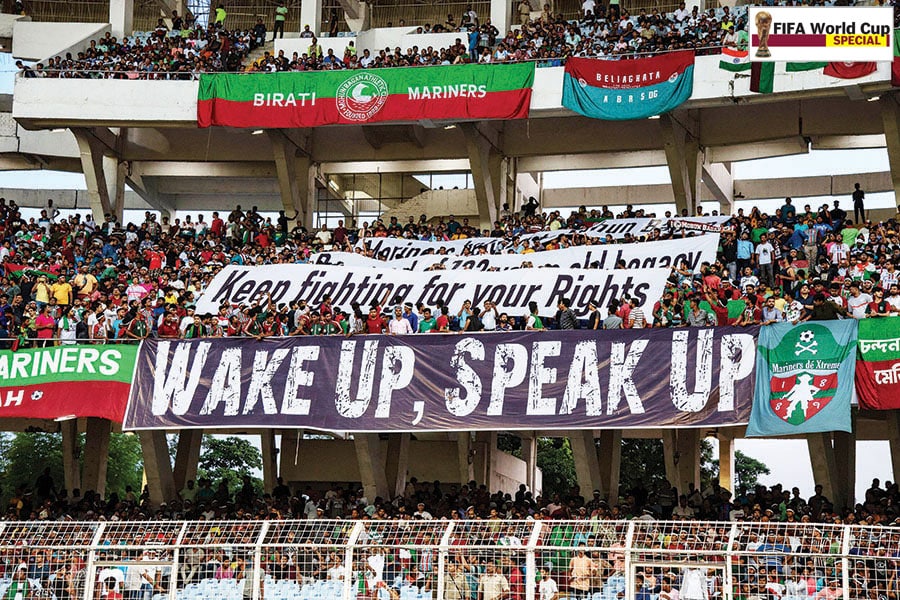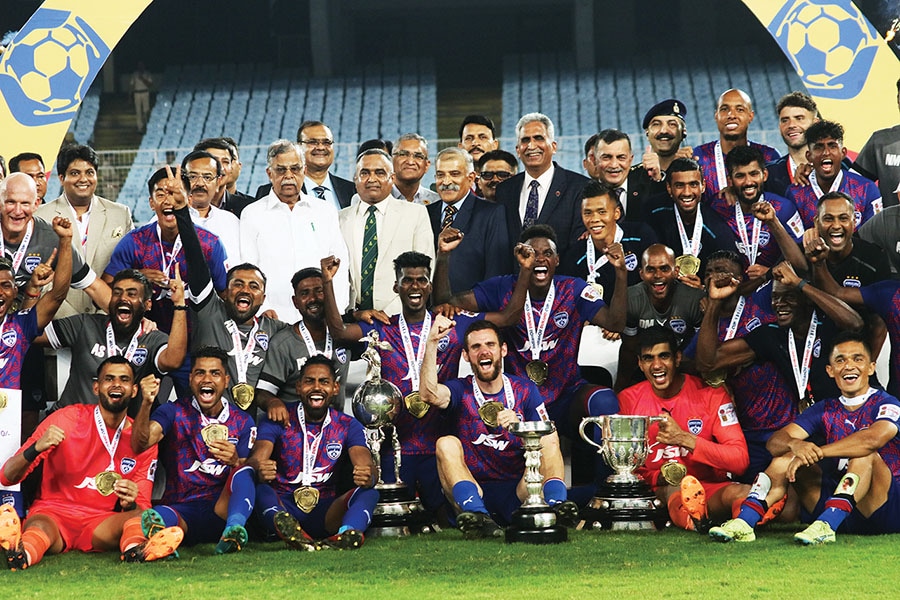
Football in India: What will it take to put the spotlight on players?
India holds the 104th spot in the FIFA rankings. Talented players such as Ishan Pandita, Lallianzuala Chhangte, Sahal Abdul Samad, and Liston Colaco have the passion to get better and put the country on the football map. But to realise the World Cup qualification dream, a football culture has to be nurtured
 The Mohun Bagan vs East Bengal fixture of the Durand Cup at Kolkata’s Salt Lake stadium had old-timers reminiscing about the glory days of the derby
Image: Amlan Biswas / Pacific Press Via Zuma Press Wire / Alamy
The Mohun Bagan vs East Bengal fixture of the Durand Cup at Kolkata’s Salt Lake stadium had old-timers reminiscing about the glory days of the derby
Image: Amlan Biswas / Pacific Press Via Zuma Press Wire / Alamy
A moment from a presentation ceremony in mid-September at the conclusion of one of India’s oldest and most prestigious tournaments was perhaps the best metaphor for the state of Indian football, indeed Indian sport.
Now billed as the opener to the Indian football season, with participation of top clubs from the Indian Super League (ISL) and the I-League (along with teams from the Services), the Durand Cup was recently played across three cites—Imphal, Guwahati and Kolkata—and five venues. Stadiums were packed, a fresh crop of young players got an opportunity to shine on the big stage—the games were broadcast live—and the capacity crowd at the Mohun Bagan vs East Bengal fixture at the Salt Lake stadium in Kolkata had old-timers reminiscing about the glory days of the derby.
After 32 days of rousing football, ISL clubs Bengaluru FC and Mumbai FC clashed in the final, with the former edging out the Islanders by the odd goal in three. The stage was set for captain Sunil Chhetri to take centre stage and hold aloft the Durand Cup. He may have eventually done the latter; but it was the former that was proving difficult as a dignitary on stage seemed keener to be in the limelight, gently prodding Chhetri to step aside so that he could be in focus with the trophy.
The problem with Indian football is not with those who play the game. It’s with those who govern it. The country’s apex football federation recently earned FIFA’s wrath and a ban; the suspension has since been lifted and may have come as a wake-up call for the federation to get its act together.
Days after the onstage VIP vs Chhetri contest for the Durand Cup, a video went viral of kabaddi players at a state-level tournament allegedly being served food stored in a toilet. Action was duly taken, politicians screamed foul, but there was little to assure that such stories won’t repeat themselves.









